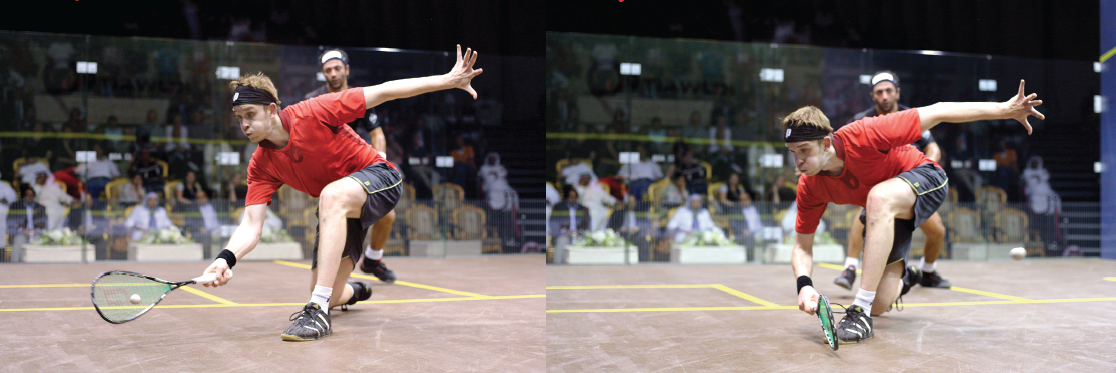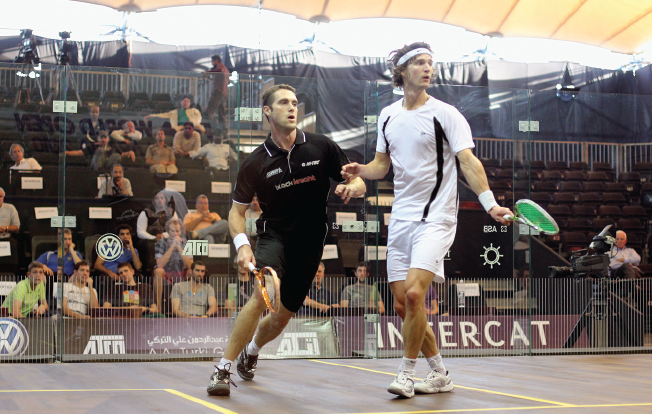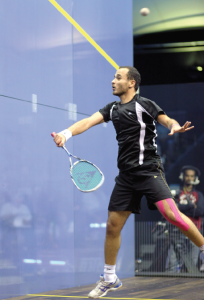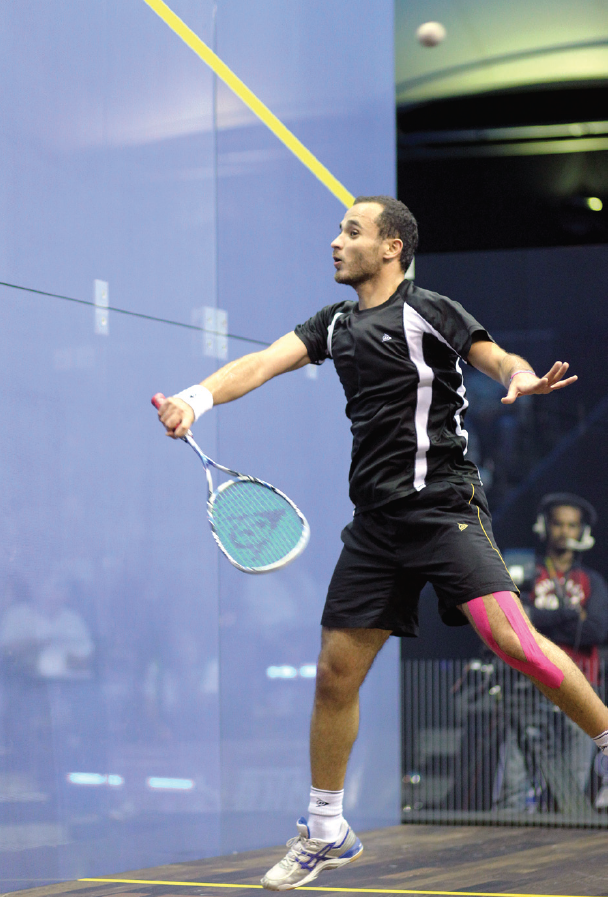By Richard Millman, Owner—Westchester Squash
You may have heard it said that there are no bad dogs—just bad owners. Well the humble cross-court suffers a similar sentence. You’ve said to yourself or heard others berating themselves on numerous occasions with the words: “Too many cross-courts!”
Sound familiar? Well the truth is that there is nothing wrong with a cross-court. It does however need to be played (as with all shots) at the right time for the right reason.
So what might those parameters be? To begin with, the purpose of a cross-court is to gain a good position for yourself (the paramount reason) and at the same time move, twist or turn your opponent, at least debilitating them physically and hopefully getting the ball beyond their interception, so that it dies in the back corner.

Rule number one with a cross-court: Never play when you are under pressure/ unable to balance and recover as you play your shot.
Why? Because (a) even a good cross-court can be volleyed or intercepted early by a skilled opponent and, if you are unable to move into position, you will be vulnerable to counter attack and (b) if you are unbalanced you are unlikely to control the shot with either accuracy or weight transference.
In other words: “If you are late (into position), play straight.”
If, however, you are early—then the world’s your oyster!
Good cross-courts come in several shapes and sizes and are played from all areas of the court.
Remembering Rule one above:
If you have time and your peripheral awareness tells you that you have room and you know how much time you need to get into position to cover a possible intercept, then you can choose from the following:
Front court with your opponent slow to recover from the previous shot: Hard low and running away toward the opposite back corner—with two bounces before the ball crosses behind the service box.
Front court with your opponent in position: Medium pace wide of your opponent aiming to strike the opposite side wall marginally behind the opponent.
Front court with your opponent in position: High float to the opposite side wall aiming to die the ball on the side wall just behind the service box—designed to work the opponent out of position and offer up a possible volley opportunity to you.
Mid court with the opponent out of position: Mid court is more risky for cross-courts but still works well if you lift the ball out of volleying range. Increase the pace in proportion to how in position you are and how badly out of position the opponent is.

Mid court with the opponent in position: Danger time—it is so easy to lose control of the rally from this situation, but you can hit a high float (not a lob which goes up and down steeply, whereas a float travels along and away from the opponent) as long as it is well aimed. Don’t do what I sometimes do under pressure when I am not thinking and try beating the opponent with pace on your cross-court from the mid court—it is the equivalent of a boxer going for a big haymaker, leaving themselves wide open and receiving a sharp straight right for their trouble. Ouch!
Back court with opponent out of position: On very rare occasions and only as a complete surprise and with you balanced and ready to move—a hard low cross-court can work. But please, please, don’t make this a frequent habit. It will come back to bite you far more often than it will help you. Otherwise—the best option by far, and my favorite shot—is the high cross-court float.
If you play this with orthodox technique, you will telegraph your intentions to your opponent and they will respond fairly immediately—so you will have to be very accurate.

My method, however, as I explained in a recent ‘Mechanics of skill’ article, is to hold the shot until the ball is almost dropping to the floor and to use forearm, wrist and fingers (almost no upper arm swing) to suddenly flip the high cross-court up and over the opponent, to die on the opposite back corner side wall. By using these mechanics the opponent doesn’t receive notice of the execution of the shot until very late, by which time the ball is already well on its way to the back corner.
The examples mentioned above are the only ones I recommend for club or even advanced players. However, they are not the only cross-courts and, if you follow Rule one above and are highly skilled and adventurous, here are some others:
Front court severe short cross-court: Some of you out there might remember my great friend Grant Pinnington (sometimes known as the Rhino). Grant had the extraordinary ability to hit a low hard skidding cross-court at the front of the court that bounced twice before it reached the side wall well in front of the service box. Because of the severity of the short angle it was almost impossible to retrieve. I say “almost” because there’s always someone who can pick it up—so you better move into position as you hit it.
Tip—look for a great deal of cut/slice.
Mid court attacking width: Many years ago I attended an exhibition/clinic with my friend and mentor, Bryan Patterson. I remember Bryan talking about decreasing risk factor and he showed how you could decrease your risk factor when trying for a cross-court nick. What he did was aim his cross-court to hit the nick almost as far back as the short line.
I remember thinking how disorienting it was for the opponent who was expecting the attacking cross-court nick and was moving forward only to discover that the ball was traveling beyond him.
When the ball struck nick behind him he was powerless to respond.
Tip—practice hitting wide mid court, wrong-footing nicks at least a thousand times before you try it in a serious match.
Back court cross-court volley nick (and cross-court nicks in general): Probably the most abused and least well executed of all the cross-courts, this much maligned shot can be effective. Perhaps the most exciting exponent of this shot in American squash that I can recall, I never even saw hit the shot, but such is his reputation for executing it I mention him here: Kenton Jernigan was rumored to have ice water in his veins and hit this shot so outrageously in his marvelous Harvard and US Championships career that people still talk of it with begrudging admiration. The begrudging bit is because nobody ought to be able to hit it like he could. Be warned— almost nobody can. So if you are going to go for it you better have practiced to an incredible degree of consistency.
So there you are: Are there bad cross-courts? Or is it their owners? You decide.





